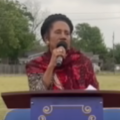The White House has been home to every U.S. president since 1800, standing as a symbol of democracy and leadership. Yet, it’s not just a historic residence—it’s also one of the most secure buildings in the world. Over the years, a complex web of advanced security measures has transformed this iconic structure into a modern-day fortress. While we will never know all of the classified security measures, Let’s explore the incredible systems that keep the president safe every day that we know of.
Bulletproof Windows: Shielding the Heart of Democracy
While the White House boasts a stunning façade, its beauty hides immense strength. Every single window is fitted with bulletproof glass, designed to withstand even the most powerful firearms. This was dramatically tested in 2011 when a shooter fired eight rounds at the residence. One bullet struck a second-story window but failed to penetrate. The likely culprit? State-of-the-art, 2.5-inch-thick glass, capable of stopping military-grade ammunition. These windows prove that even the simplest elements of the White House are built with security in mind.
Silent Guardians on the Roof
If you ever visit the White House and glance upwards, you might spot a tripod or shadowy figure on the roof. These aren’t tourists with cameras—they’re members of the Secret Service’s Counter Sniper Team. These elite sharpshooters are trained to hit targets from over 3,000 feet away, ensuring that any potential threat is neutralized long before it reaches the residence. While they’ve never had to fire on a real threat, their presence is a powerful deterrent and a testament to the White House’s layered security.
Defending the Skies Above
Airspace above the White House is among the most restricted in the world. Known as the Special Flight Rules Area (SFRA), it spans a 33-mile radius around Washington, D.C. Any unauthorized aircraft entering this zone triggers immediate action from NORAD, which scrambles military jets to intercept the intruder within minutes. This no-fly zone is backed by missile defense systems, such as the Avenger air defense unit, stationed nearby and ready to neutralize aerial threats.
Four-Legged Defenders: The Canine Unit
For decades, Belgian Malinois guard dogs have patrolled the White House grounds. These highly trained dogs are known for their speed, agility, and exceptional ability to detect explosives. Capable of leaping six-foot fences and running at speeds of 30 miles per hour, they are a force to be reckoned with. In recent years, robotic dogs have been introduced as a futuristic supplement, potentially equipped with advanced weaponry to bolster security.
Invisible Barriers: Infrared Sensors and Anti-Climb Fences
The perimeter of the White House is fortified with a towering 13-foot fence equipped with anti-climb technology and pressure sensors. These features alert security to any attempted breaches. Adding to the defense are rumored infrared sensors, capable of detecting heat signatures and human movement even in complete darkness. While the Secret Service has never confirmed their presence, the mere suggestion of such measures is enough to deter most intruders.
Beneath the Surface: Tunnels and Bunkers
The White House’s security doesn’t end at ground level. Below the surface lies a network of secret tunnels and a fortified bunker known as the Presidential Emergency Operations Center (PEOC). This facility, built during World War II, serves as a secure location for the president during emergencies, including nuclear threats. Hidden deep underground, the PEOC is a marvel of engineering, capable of withstanding catastrophic attacks while ensuring continuity of leadership.
Aerial Escape: Marine One
When ground security isn’t enough, the president has Marine One at the ready. This helicopter, fitted with ballistic armor and anti-missile defenses, is stationed just 30 miles away at Quantico, Virginia. Capable of flying at speeds over 150 miles per hour, Marine One can quickly evacuate the president during an emergency. Its cutting-edge technology ensures that the president remains untouchable in the air.
The Hidden Hands Behind Presidential Meals
Even the president’s meals are a matter of national security. To prevent poisoning, the Secret Service meticulously oversees food preparation, whether in the White House kitchen or at public events. It’s rumored that food tasters are still employed to test dishes before they reach the president’s plate, adding another layer of protection to the Commander-in-Chief’s daily routine.
A Fortress Open to the Public
Despite its fortress-like security, the White House remains open to over a million visitors each year. However, gaining entry requires rigorous background checks, and items as mundane as pens or flags are prohibited. These measures strike a delicate balance between public accessibility and the need to safeguard one of the nation’s most important symbols.
The White House is more than a residence—it’s a testament to the ingenuity and dedication of those tasked with protecting America’s leaders. From bulletproof glass to subterranean bunkers, every security feature is a reminder that the safety of the presidency is vital to the nation’s stability.
WE’D LOVE TO HEAR YOUR THOUGHTS! PLEASE COMMENT BELOW.
JIMMY
Find more articles like this at steadfastandloyal.com.














How do they not know where the cocaine came from, if its so secure?
Beat me to it! Yep, SO secure it let Hunter lose his stash TWICE, and still doesn’t know where it came from.
big question, bet a lot of people are wondering the same thing